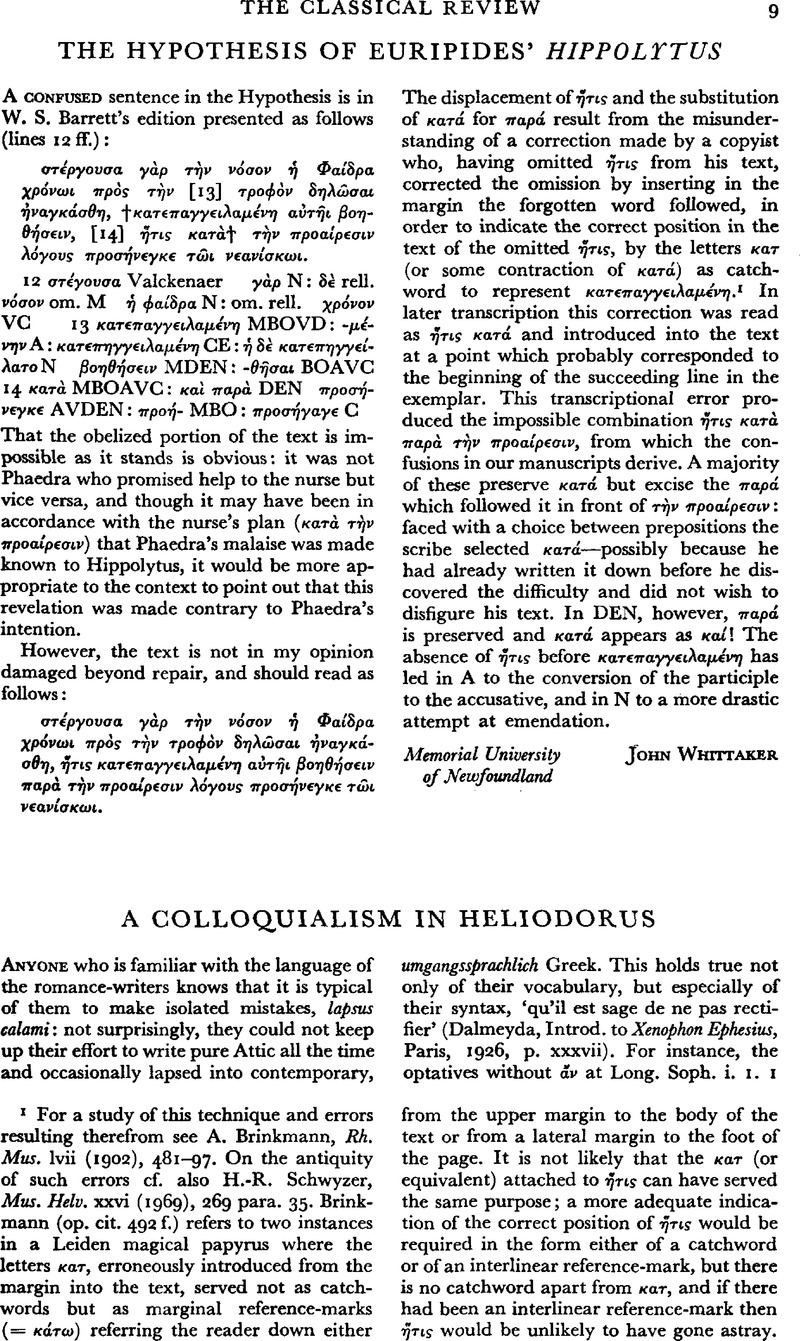No CrossRef data available.
Article contents
The Hypothesis of Euripides' Hippolytus
Published online by Cambridge University Press: 27 February 2009
Abstract

- Type
- Review Article
- Information
- Copyright
- Copyright © The Classical Association 1971
References
1 For a study of this technique and errors resulting therefrom see Brinkmann, A., Rh. Mus. lvii (1902), 481–497Google Scholar. On the antiquity of such errors cf. also Schwyzer, H.-R., Mus. Helv. xxvi (1969), 269 para. 35Google Scholar. Brinkmann (op. cit. 492 f.) refers to two instances in a Leiden magical papyrus where the letters κατ, erroneously introduced from the margin into the text, served not as catchwords but as marginal reference-marks (= κάτω) referring the reader down either from the upper margin to the body of the text or from a lateral margin to the foot of the page. It is not likely that the κατ (or equivalent) attached to ἥτις can have served the same purpose; a more adequate indication of the correct position of ἥτις would be required in the form either of a catchword or of an interlinear reference-mark, but there is no catchword apart from κατ, and if there had been an interlinear reference-mark then ἥτις would be unlikely to have gone astray.


